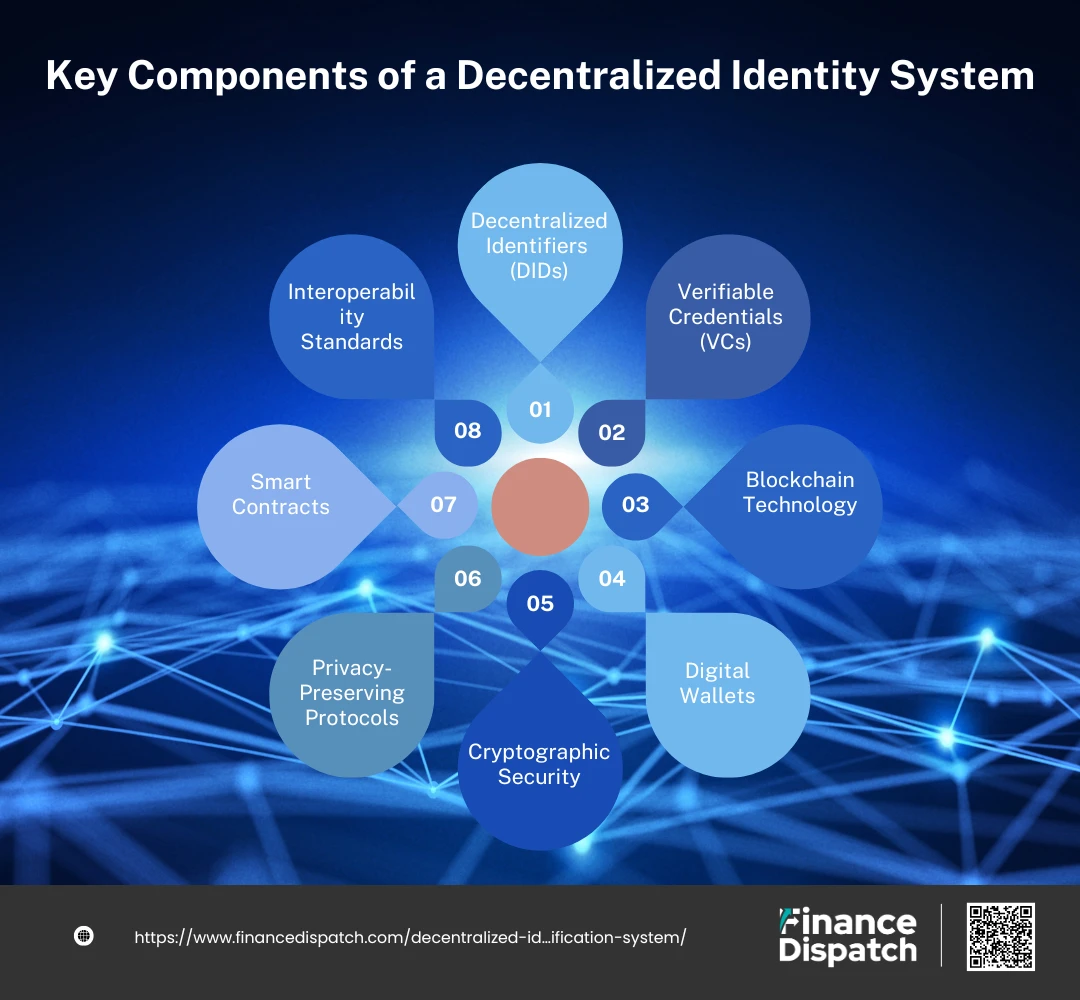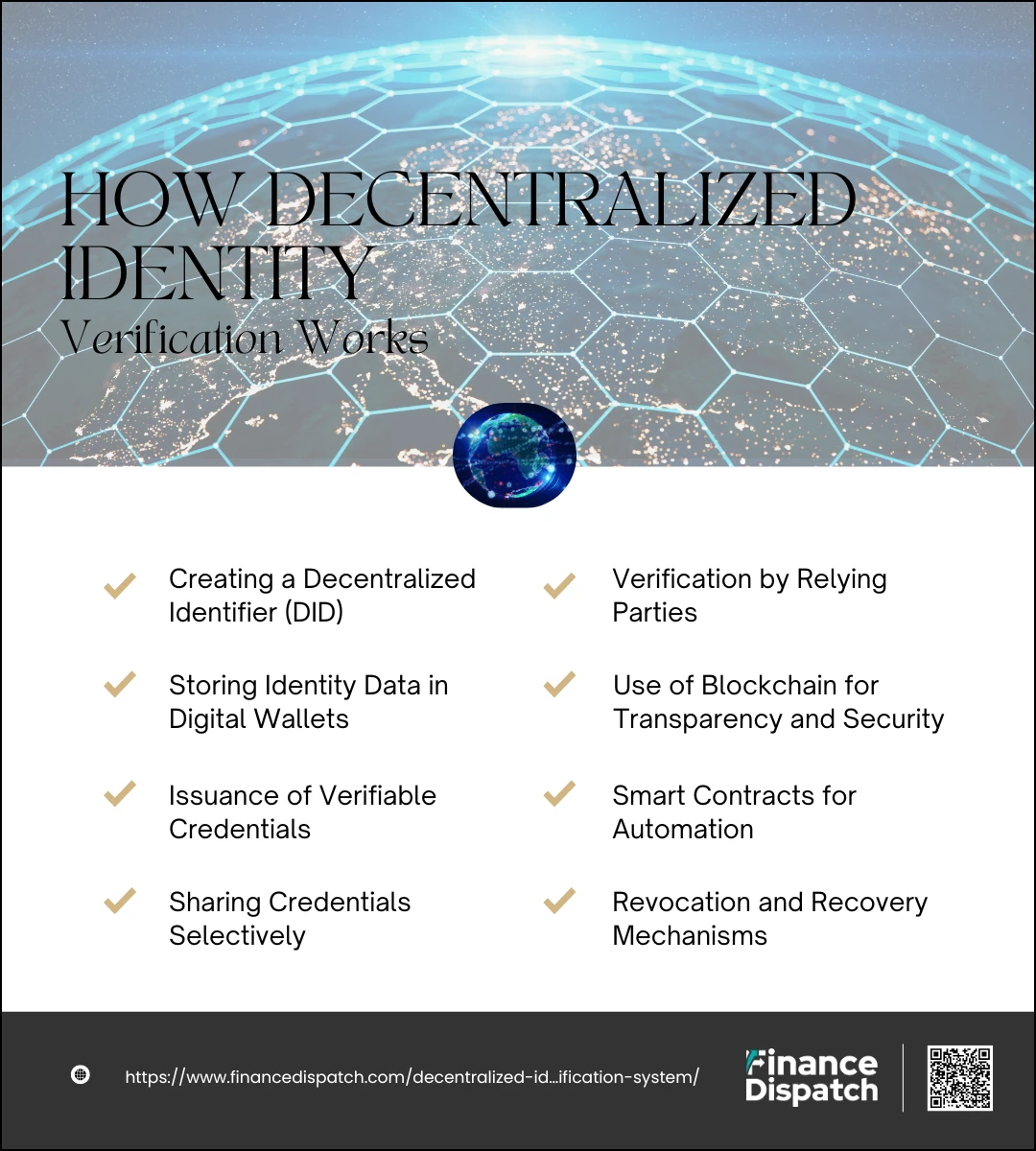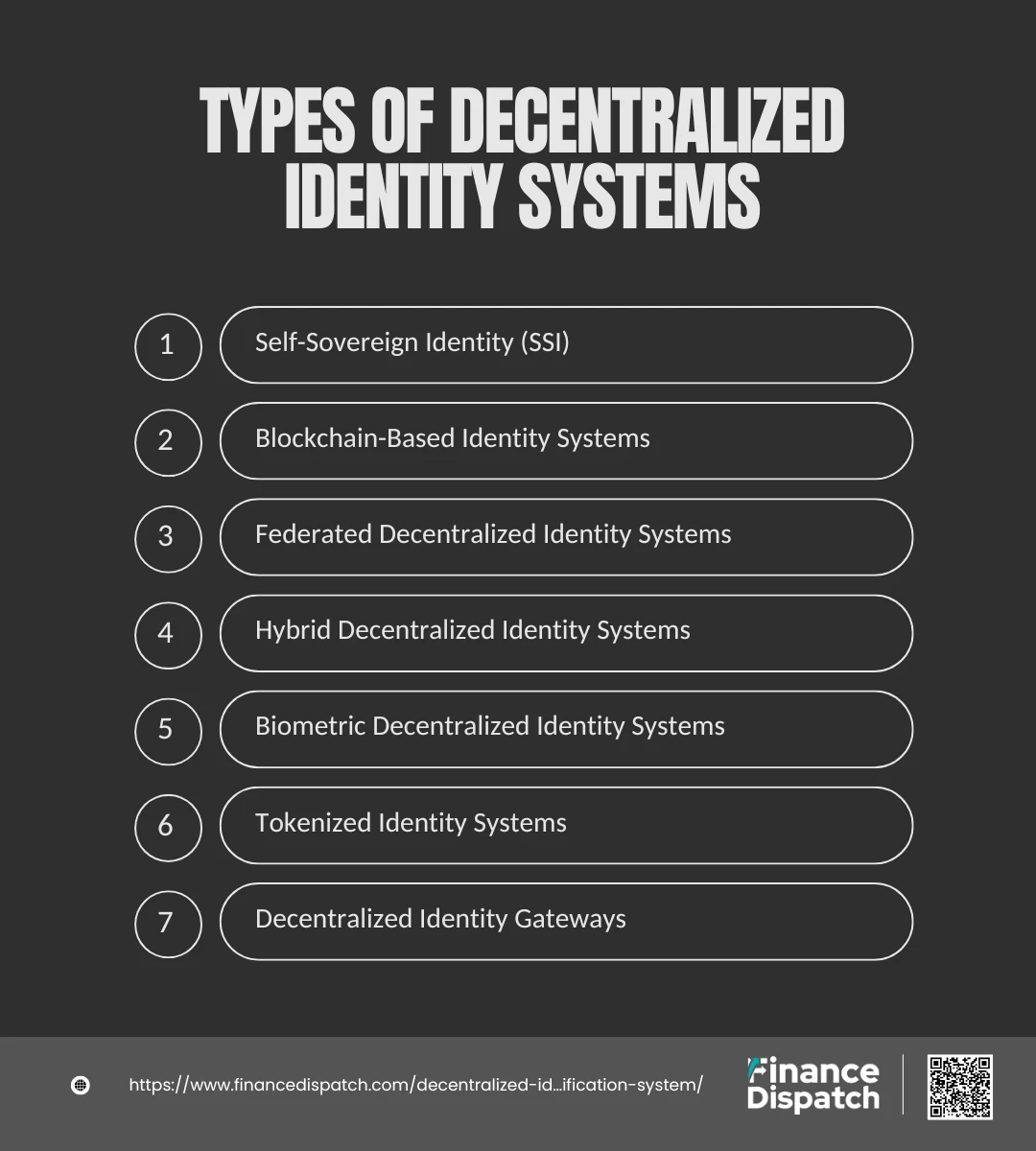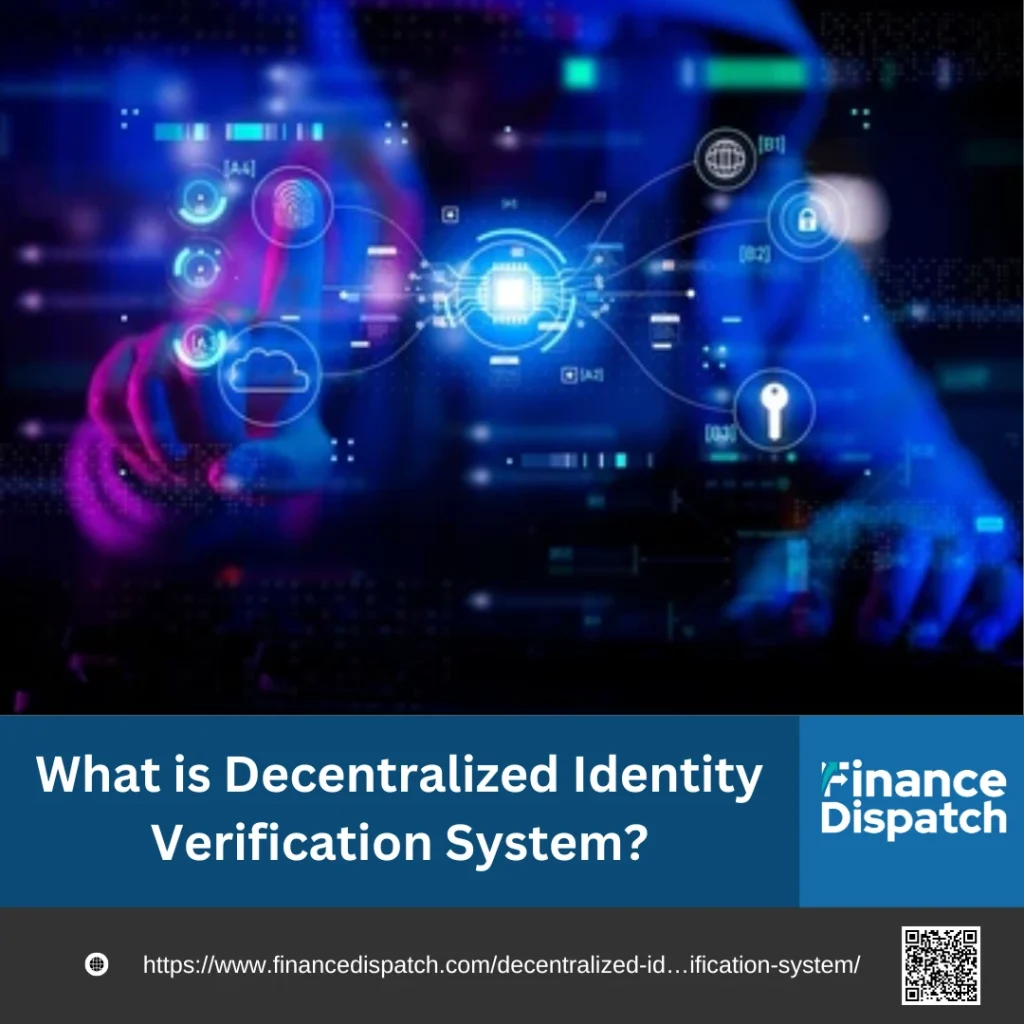In a world increasingly reliant on digital interactions, securing and verifying identity has become a critical challenge. Traditional centralized identity systems, which store sensitive personal data in centralized repositories, have long been the norm. However, these systems often suffer from vulnerabilities such as data breaches, privacy concerns, and limited user control. Enter decentralized identity verification systems—a revolutionary approach leveraging blockchain technology to empower individuals with control over their digital identities. By distributing identity management across a decentralized network, these systems enhance security, privacy, and efficiency, marking a significant shift in how we authenticate and manage personal information online. This article delves into the fundamentals of decentralized identity verification systems, exploring how they work, their key features, and why they are reshaping the future of digital identity management.
Understanding Decentralized Identity Verification
Decentralized Identity Verification is a transformative approach to managing and authenticating digital identities without relying on a centralized authority. Unlike traditional systems where personal data is stored in siloed servers controlled by single entities, decentralized identity systems use blockchain technology to distribute control and enhance security. At its core, this approach empowers individuals to own and manage their identity information through unique decentralized identifiers (DIDs) and cryptographic techniques. These systems enable users to prove their identity while maintaining privacy, as sensitive data is stored in secure digital wallets rather than central databases. By decentralizing the process, these systems reduce risks such as data breaches, unauthorized access, and identity theft, offering a user-centric, secure, and scalable solution for modern identity management.

Key Components of a Decentralized Identity System
A decentralized identity system integrates several foundational components, each playing a vital role in creating a secure, user-centric, and efficient identity management framework. Here’s a detailed look at each key component:
1. Decentralized Identifiers (DIDs)
Decentralized Identifiers are unique, self-owned identifiers that allow individuals or entities to manage their digital identities without depending on centralized authorities. Unlike traditional identifiers (such as email addresses or usernames), DIDs are created and controlled by users themselves and are stored on a blockchain for transparency and immutability. These identifiers are not tied to a specific service provider, giving users the flexibility to use their DIDs across various platforms while maintaining full control.
2. Verifiable Credentials (VCs)
Verifiable Credentials are digital, cryptographically secure documents issued by trusted entities such as government agencies, educational institutions, or employers. They enable users to prove specific attributes—like age, education, or certifications—without exposing unrelated personal data. For instance, when verifying eligibility for a service, a user can share a VC proving their age without disclosing their full date of birth. VCs are tamper-evident and verifiable through blockchain-based systems, ensuring both security and trust.
3. Blockchain Technology
Blockchain serves as the backbone of decentralized identity systems. It acts as a decentralized, tamper-proof ledger where identity-related data, such as DIDs and verifiable credentials, are securely recorded. The distributed nature of blockchain ensures there is no single point of failure, enhancing security. Moreover, the immutability of blockchain entries ensures that identity data cannot be altered, providing an additional layer of trust and transparency.
4. Digital Wallets
Digital wallets are secure applications or platforms that store and manage a user’s DIDs and verifiable credentials. These wallets allow users to share their credentials selectively, deciding when, how, and with whom their identity information is shared. A digital wallet might include features such as encryption, backup options, and multi-factor authentication to ensure maximum security. By giving users full control over their data, wallets reinforce the user-centric nature of decentralized identity systems.
5. Cryptographic Security
Cryptographic techniques ensure the security and privacy of sensitive data within a decentralized identity system. Public-private key infrastructure (PKI) is often used, allowing users to encrypt their data with a private key and share a public key for verification purposes. These cryptographic measures prevent unauthorized access and ensure that only intended parties can view or verify identity information, offering a robust defense against data breaches and impersonation attempts.
6. Privacy-Preserving Protocols
Privacy-preserving protocols, such as zero-knowledge proofs, play a critical role in decentralized identity systems. These protocols allow users to verify specific identity attributes without revealing the underlying data. For example, a user can confirm they are over 18 without disclosing their exact date of birth. By minimizing data exposure, these protocols protect users from potential misuse of their personal information and bolster privacy.
7. Smart Contracts
Smart contracts are self-executing codes on the blockchain that automate identity-related processes such as verification, revocation, or granting access to data. These contracts operate based on predefined rules and conditions, ensuring that identity verification processes are executed transparently and without the need for intermediaries. For example, a smart contract can automatically revoke a credential if its validity period expires, reducing human errors and enhancing system efficiency.
8. Interoperability Standards
Interoperability standards ensure that decentralized identity systems can work seamlessly with existing digital identity frameworks and platforms. Standards such as W3C’s Decentralized Identifiers (DIDs) and Verifiable Credentials (VCs) allow these systems to integrate with diverse services, ranging from financial institutions to healthcare providers. Interoperability is key to widespread adoption, enabling users to use their digital identity across multiple platforms without compatibility issues.

How Decentralized Identity Verification Works
Decentralized identity verification involves a series of innovative processes and technologies that ensure secure, user-controlled, and efficient management of identity data. Here’s a detailed explanation of each step:
1. Creating a Decentralized Identifier (DID)
A Decentralized Identifier (DID) is the foundation of decentralized identity. Users generate their unique DID through a digital wallet or identity management tool. Unlike traditional identifiers like email addresses or usernames, DIDs are stored on a blockchain, making them immutable and tamper-proof. These identifiers are self-owned, meaning users retain complete control without relying on centralized authorities or third parties.
2. Storing Identity Data in Digital Wallets
Identity-related information, such as personal credentials and cryptographic keys, is securely stored in a user’s digital wallet. These wallets act as personal identity hubs, providing a secure location for managing and sharing credentials. Unlike centralized systems, digital wallets ensure that sensitive data remains under the user’s control, reducing risks associated with centralized data breaches.
3. Issuance of Verifiable Credentials
Trusted entities, such as government agencies, universities, or healthcare providers, issue verifiable credentials to users. These credentials are cryptographically signed and linked to the user’s DID, allowing them to serve as proof of specific attributes, such as citizenship, qualifications, or professional certifications. Because they are stored in the user’s wallet and linked to the blockchain, these credentials are highly secure and easily verifiable.
4. Sharing Credentials Selectively
Decentralized systems enable users to share only the information necessary for a specific verification process. For example, a user proving their age can share a cryptographic proof that they are over 18 without disclosing their full date of birth. This selective sharing is facilitated by privacy-preserving protocols, such as zero-knowledge proofs, which enhance privacy while fulfilling verification requirements.
5. Verification by Relying Parties
When users share credentials with service providers or organizations, these relying parties verify the authenticity of the credentials using cryptographic methods. Verification involves checking the digital signature of the credential against the blockchain to ensure it is valid and unaltered. This process does not require access to the underlying personal data, preserving the user’s privacy while confirming their identity.
6. Use of Blockchain for Transparency and Security
Blockchain serves as the backbone of the decentralized identity system. It records DIDs and credential transactions in a decentralized, tamper-proof ledger. Blockchain’s transparency allows all participants in the network to trust the system’s integrity while ensuring that identity data is secure and cannot be altered by malicious actors. This decentralized structure eliminates reliance on central authorities, reducing vulnerabilities.
7. Smart Contracts for Automation
Smart contracts are self-executing codes stored on the blockchain that automate various identity-related processes. For instance, they can enforce rules for credential validity, trigger automatic revocation when a credential expires, or manage access control to sensitive information. By automating these processes, smart contracts eliminate the need for intermediaries, making the system faster, more efficient, and error-free.
8. Revocation and Recovery Mechanisms
Decentralized identity systems include robust mechanisms for revocation and recovery. If a credential becomes invalid (e.g., a driver’s license expires) or is compromised, the issuer or user can revoke it using the blockchain, ensuring that relying parties are aware of the change. Recovery mechanisms, such as secure backup codes or multi-signature approvals, allow users to regain access to their DIDs and credentials in case of loss or theft, ensuring the system’s resilience.

Types of Decentralized Identity Systems
Decentralized identity systems come in various forms, each designed to meet specific needs and use cases while maintaining the core principles of user control, privacy, and security. These systems differ based on their implementation, the level of user autonomy, and the technologies they leverage. Below are the main types of decentralized identity systems:
1. Self-Sovereign Identity (SSI)
Self-Sovereign Identity systems prioritize complete user control and ownership over identity data. Users create and manage their identifiers (DIDs) and credentials without relying on any central authority. Credentials are stored in secure digital wallets, and users decide when, how, and with whom to share their information. SSI systems are ideal for individuals seeking maximum privacy and autonomy.
2. Blockchain-Based Identity Systems
These systems leverage blockchain technology to store and manage DIDs and identity transactions. Blockchain ensures immutability, transparency, and decentralization, making it a trusted framework for secure identity verification. Examples include identity solutions built on platforms like Ethereum or Hyperledger, where identity data is distributed across the network for enhanced security.
3. Federated Decentralized Identity Systems
In federated decentralized systems, multiple trusted entities collaborate to verify and manage user identities. While they maintain decentralized principles, these systems rely on a network of federated nodes to authenticate users. This model is often used in industries or regions requiring collaboration between multiple organizations, such as healthcare or government.
4. Hybrid Decentralized Identity Systems
Hybrid systems combine decentralized and centralized features, offering a balance between user control and institutional oversight. For example, credentials might be issued by a central authority but stored and managed by the user in a decentralized manner. These systems are useful for organizations transitioning from traditional identity systems to fully decentralized models.
5. Biometric Decentralized Identity Systems
Biometric systems integrate physical attributes, such as fingerprints, facial recognition, or iris scans, with decentralized identifiers. These systems enhance security by tying identity verification to unique biological features while ensuring privacy through local storage of biometric data in digital wallets or secure devices.
6. Tokenized Identity Systems
Tokenized identity systems represent identity attributes or credentials as cryptographic tokens stored on a blockchain. These tokens can be shared selectively and verified instantly, making them suitable for applications like online marketplaces, decentralized finance (DeFi), and gaming platforms.
7. Decentralized Identity Gateways
These systems act as bridges between decentralized identity solutions and traditional frameworks, ensuring compatibility and interoperability. Gateways enable users to use their decentralized identities in centralized environments, providing a gradual transition to decentralized systems.
Conclusion
Decentralized identity systems represent a revolutionary step forward in how we manage and protect personal information in the digital age. By shifting control from centralized authorities to individuals, these systems prioritize privacy, security, and user autonomy while addressing many of the vulnerabilities inherent in traditional identity frameworks. As technology advances and adoption grows across industries, decentralized identity has the potential to redefine trust, streamline digital interactions, and empower users to take ownership of their data. While challenges such as scalability, regulatory compliance, and user education remain, the benefits far outweigh the hurdles, making decentralized identity a critical component of the future digital ecosystem. Embracing this innovation is not just a choice but a necessity for organizations and individuals aiming to thrive in an increasingly interconnected world.
FAQs
1. How does decentralized identity enhance user trust in online services?
Decentralized identity systems enhance user trust by giving individuals full control over their personal data. Users decide what information to share and with whom, and the use of blockchain ensures that their data is secure and tamper-proof. This transparency and autonomy foster greater confidence in digital interactions.
2. Can decentralized identity systems work without blockchain?
While blockchain is a common foundation for decentralized identity systems due to its security and transparency, it is not the only option. Alternative technologies like distributed ledgers or peer-to-peer networks can also support decentralized identity frameworks, depending on the specific use case and scalability requirements.
3. What are the environmental implications of using blockchain for decentralized identity?
Some blockchains, particularly those using proof-of-work consensus mechanisms, have significant energy consumption, which can impact the environment. However, many decentralized identity systems leverage more energy-efficient blockchains, such as those using proof-of-stake or other eco-friendly consensus algorithms, to minimize environmental impact.
4. How can decentralized identity systems support individuals in regions with limited access to technology?
Decentralized identity systems can be implemented with lightweight digital wallets and offline verification methods, making them accessible in regions with limited internet connectivity. Governments and organizations can also provide shared or low-cost devices to help individuals in underprivileged areas benefit from secure and verifiable digital identities.
5. What role do biometric technologies play in decentralized identity systems?
Biometric technologies, such as facial recognition or fingerprint scanning, can enhance the security of decentralized identity systems by tying digital identities to unique physical traits. However, these systems prioritize privacy by ensuring that biometric data is stored locally on the user’s device or wallet rather than on a centralized server, reducing the risk of misuse or breaches.



